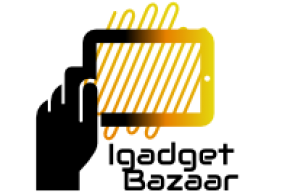Thirty years ago very few of us owned a computer and the few mobile phones in existence were large, heavy and slightly ridiculous. Owning one of the latter was meant to inspire admiration but largely inspired the opposite, while if you wanted to talk to a mate on the other side of the world it was often quicker and easier to go join them. The world has changed beyond all recognition since then – but in the rush to create products that serve our every need, somebody seems to have been overlooking a detail or two.
The Problem with Pocket Computing
When computers finally landed in our homes, they did so with quite a thump. They were big, they were cumbersome and they cost a packet. Since the early days of home computing the technology industry has been doing its level best to create the perfect pocket-sized solution. We’re finally there and mobile phones are the computer in our pockets that we’ve all been waiting for. Today affordable, one-sized-fits-all solutions are available to most people at prices that won’t break the bank. There’s a small problem, of course, and it really is small; the screens are simply not actually “human sized”. At a squint you can watch movies, read documents or check timetables, but for most people, it really is at a squint. The chances are that in the not too distant future, our phones will be the only gadget we need to carry – replacing the old “key’s wallet, passport” check we once needed to make before leaving the house. While technology has consolidated pretty much every single solution to every need it’s not done so at a sensible, readable size.
Historical Hiccups
Amazon’s Kindle along with tablet computers like the iPad are offering human sized solutions, but with another small or, rather larger, problem. The basic imperative in the technological revolution of the last thirty years has been to fulfil the prediction that we would soon carry a handy sized computer in our pockets. The idea has been simply to offer a single solution to all our needs. However the tablet has shown that we’ve missed a link in this particular evolution (not the first time) and written the human interface out of the equation a little prematurely. Yes, eventually we can hope that computers will upgrade us all, but in the meantime we need to be able to see those screens, without a complicated and accident prone slip of the thumb here and there. The solution is at hand but it’s still under development.
Solutions in Obvious Places
The problem has occurred before, the not so distant history of TV manufacture provides some clues; from tiny screens to massive screens and back again (several times) developers of TV technology also struggled to find the ‘right’ sized for viewing. Other technologies have followed suit and you can only assume that some of the brightest brains in the technological box can be a little slow on the up-take. The answer, like all obvious answers, was right there under their noses already. Perhaps it would be better to say under the tip of their pen; the A4 sheet, the original, and still the best, human optimised ‘reader’ (and writer of course).
The (soon to be) Late e-Reader?
Although still under development, the gradual evolution of plastic technology is creating the perfect solution to the problem; flexible plastic sheets of e-Paper, A4 in size, which can be used wirelessly in conjunction with our phones. In terms of document display the technology is, in fact, already there while video capability is well and truly on its way. The solution to the convenience of smart phones and the inherent inconvenience of their screen size is likely to be simple and extremely functional. The tablet computer and the e-Reader will, it seems, take their place in history as red-herrings that resulted from the rapid changes in the world of computing and technology.
Carlo Pitt is interested computers. If he is not working or writing she spends most of her time outdoors to take pictures of free living animals.
